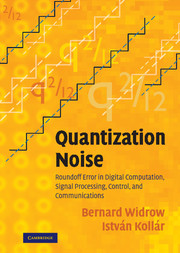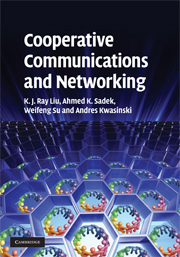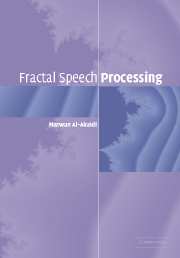Refine search
Actions for selected content:
6778 results in Communications and signal processing
3 - Wireless security
-
- Book:
- Essentials of Short-Range Wireless
- Published online:
- 10 November 2010
- Print publication:
- 08 July 2010, pp 60-80
-
- Chapter
- Export citation
Frontmatter
-
- Book:
- Essentials of Short-Range Wireless
- Published online:
- 10 November 2010
- Print publication:
- 08 July 2010, pp i-iv
-
- Chapter
- Export citation
Contents
-
- Book:
- Essentials of Short-Range Wireless
- Published online:
- 10 November 2010
- Print publication:
- 08 July 2010, pp v-xiv
-
- Chapter
- Export citation
Index
-
- Book:
- Essentials of Short-Range Wireless
- Published online:
- 10 November 2010
- Print publication:
- 08 July 2010, pp 329-332
-
- Chapter
- Export citation
12 - Markets and applications
-
- Book:
- Essentials of Short-Range Wireless
- Published online:
- 10 November 2010
- Print publication:
- 08 July 2010, pp 296-323
-
- Chapter
- Export citation
11 - Implementation choices
-
- Book:
- Essentials of Short-Range Wireless
- Published online:
- 10 November 2010
- Print publication:
- 08 July 2010, pp 284-295
-
- Chapter
- Export citation
6 - IEEE 802.15.4, ZigBee PRO, RF4CE, 6LoWPAN and WirelessHART
-
- Book:
- Essentials of Short-Range Wireless
- Published online:
- 10 November 2010
- Print publication:
- 08 July 2010, pp 147-175
-
- Chapter
- Export citation
8 - Application development – configuration
-
- Book:
- Essentials of Short-Range Wireless
- Published online:
- 10 November 2010
- Print publication:
- 08 July 2010, pp 208-238
-
- Chapter
- Export citation
Glossary of acronyms and abbreviations
-
- Book:
- Essentials of Short-Range Wireless
- Published online:
- 10 November 2010
- Print publication:
- 08 July 2010, pp 324-328
-
- Chapter
- Export citation
9 - Application development – performance
-
- Book:
- Essentials of Short-Range Wireless
- Published online:
- 10 November 2010
- Print publication:
- 08 July 2010, pp 239-263
-
- Chapter
- Export citation
5 - IEEE 802.11abgn/Wi-Fi
-
- Book:
- Essentials of Short-Range Wireless
- Published online:
- 10 November 2010
- Print publication:
- 08 July 2010, pp 115-146
-
- Chapter
- Export citation
10 - Practical considerations – production, certification and IP
-
- Book:
- Essentials of Short-Range Wireless
- Published online:
- 10 November 2010
- Print publication:
- 08 July 2010, pp 264-283
-
- Chapter
- Export citation
7 - Bluetooth low energy (formerly Wibree)
-
- Book:
- Essentials of Short-Range Wireless
- Published online:
- 10 November 2010
- Print publication:
- 08 July 2010, pp 176-207
-
- Chapter
- Export citation

Quantization Noise
- Roundoff Error in Digital Computation, Signal Processing, Control, and Communications
-
- Published online:
- 06 July 2010
- Print publication:
- 03 July 2008

Cooperative Communications and Networking
-
- Published online:
- 06 July 2010
- Print publication:
- 18 December 2008

Quickest Detection
-
- Published online:
- 06 July 2010
- Print publication:
- 20 November 2008

Fractal Speech Processing
-
- Published online:
- 06 July 2010
- Print publication:
- 20 May 2004
-
- Book
- Export citation
6 - Architecture of filters and transforms
-
- Book:
- Fast Algorithms for Signal Processing
- Published online:
- 03 May 2011
- Print publication:
- 24 June 2010, pp 194-230
-
- Chapter
- Export citation
5 - Fast algorithms for short convolutions
-
- Book:
- Fast Algorithms for Signal Processing
- Published online:
- 03 May 2011
- Print publication:
- 24 June 2010, pp 145-193
-
- Chapter
- Export citation
Preface
-
- Book:
- Fast Algorithms for Signal Processing
- Published online:
- 03 May 2011
- Print publication:
- 24 June 2010, pp xi-xii
-
- Chapter
- Export citation
